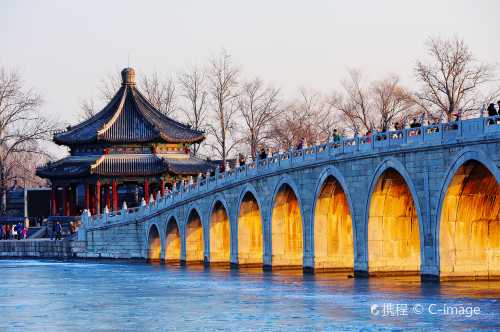Popular Trip Moments
unrestored section of the Great Wall, it is rugged, wild | Discover and have fun at Universal Studios Beijing | Jingshan Park– The Best Panoramic View of the Forbidden City | Beihai Park – Beijing's Imperial Garden Oasis | Mummy exhibition at Meet You Flagship museum 🇨🇳 | Take stunning photos at the Butterfly Exhibition under the light and shadow | Monument to the People's Heroes: A Towering Tribute to Courage and Freedom | Yuanmingyuan Park After the Strong Winds | Where to take the kids for May Day? This hotel is so fun, they won't want to leave! | Courtyard Beijing Hotel Lobby Lounge | Step into History: The Timeless Majesty of Beijing’s Palace Museum | 798 in Spring: Where Industrial Bones Bloom with Artistic Soul | Four Seasons Hotel Beijing Review | National Museum of Classic Books: A Journey Through 3,000 Years of Cultural Treasures | A Chance Encounter Between Nature and the Pages: Heyuan Bookshop | Modeskou Dajie, Beijing Shijingshan City Walk Route | Beijing China Oil Painting Academy: An Art Tour of White Churches and Red Brick Secret Realms | Beijing Gets Its Own "Seine River"! | Beijing Botanical Garden: A Hidden Paradise and a Dance with Blossoms | I'd call this the ultimate family-friendly hotel. I absolutely loved my stay here! | Beijing | N Ways to Explore the Royal Gardens | Jin Pavilion's New Menu: A Cantonese Feast, Savoring Nature | Don't miss out on this Miyun adventure! Hiking and water fun for a whole day! | Hidden Gem Homestay in the Mountains of Huairou, Beijing | Imperial Gardens of China: A Glimpse into Nature and Harmony | I've stayed in countless budget hotels, but this one in Beijing makes me want to move in!!! | I've stayed in countless budget hotels, but this one in Beijing makes me want to move in! | 99% of People Don't Know About This Secret Spring Hotel in Beijing! | ART ESCAPE | A Comfortable Stay and Exciting Adventures in Beijing!
Popular Travel Types
Recommended Attractions at Popular Destinations
Bangkok attraction near me | Manila attraction near me | Tokyo attraction near me | Taipei attraction near me | Hong Kong attraction near me | Seoul attraction near me | Kuala Lumpur attraction near me | Los Angeles attraction near me | Shanghai attraction near me | New York attraction near me | Shenzhen attraction near me | Osaka attraction near me | Singapore attraction near me | London attraction near me | Guangzhou attraction near me | San Francisco attraction near me | Beijing attraction near me | Macau attraction near me | Bali attraction near me | Jakarta attraction near me | Paris attraction near me | Ho Chi Minh City attraction near me | Istanbul attraction near me | Phuket attraction near me | Chicago attraction near me | Seattle attraction near me | Toronto attraction near me | Orlando attraction near me | Cebu attraction near me | Chiang Mai attraction near me
Popular Attractions
Zhangjiajie Grand Canyon | Akihabara Electric Town | Auckland War Memorial Museum | Auckland Harbour Bridge | S.E.A. Aquarium | Pak Ou Caves | Yu Garden | Tian'Anmen Gate Tower | Universal Beijing Resort | Shanghai Tower | Water Cube | Suzhou Museum | The West Lake | Jinsha Site Museum | Well Agro | Undavalli Caves | Ho Chi Minh City Book Street | Espiye Lunapark | Cabaret de Licques | 内牧公園 お花見広場 | Allegrippis Trail System | Aqua Action | Laxmi-Narayan Temple | Chapelle des Templiers ou du Temple | Wat Ban Mae Kua | Murl Emery Arch | Academia Das Cidades | VILLA HEDONICA | Plaza Paris | Penida Island
Popular Restaurants in Beijing
LA CHANSONNIÈRE | Rive Gauche | Fu Chun Ju | CAI YI XUAN | The View 3912 | Siji Minfu Roast Duck (Gugong) | ZIJIN MANSION | MIO | China Grill | Café Zi | JING RESTAURANT | Gastro Esthetics at DaDong | IL RISTORANTE - NIKO ROMITO | SHENG YONG XING ROAST DUCK RESTAURANT | King's Joy | TIDU | AZUR | QUAN JU DE | Char bar&grill | Grill 79 | Yun Summer Lounge | Redwall 1939 | LU YU | Huguosi Restaurant Xicheng | XINRONGJI | THE HOUSE OF RONG | Beijing Pie | LES MORILLES | BEI JING MAN FU LOU SHUAN ROU | Kanglaidejiudiandatangjiulang
Popular Ranked Lists
Popular Luxury Hotels Near P. Nui Sam | Popular Premium Hotels in Silivri | Top 9 Local Restaurants in Wushan County | Popular Luxury Hotels Near Carcar City | Top 5 Best Things to Do in Tongliao | Popular Premium Hotels in Sao Tome and Principe | Popular Luxury Hotels Near Vale of Glamorgan | Popular Best Things to Do in Jinchang | Popular Best Things to Do in Nanchong | Top 10 Local Restaurants in Genting Highlands | Popular Luxury Hotels Near Marechal Deodoro | Top 5 Local Restaurants in Danzhou | Popular Best Things to Do in Zhuji | Popular Luxury Hotels Near Mullingar | Popular Luxury Hotels Near Pleasant Prairie | Popular Best Things to Do in Baiyin | Top 5 Best Things to Do in Xiangshan | Popular Luxury Hotels Near Saint-Priest | Top 5 Best Things to Do in Hinggan League | Popular Best Things to Do in Jishou | Popular Luxury Hotels Near Isla Aguada | Popular Best Things to Do in Guang'an | Top 7 Best Things to Do in Baishan | Top 3 Best Things to Do in Zhoukou | Popular Luxury Hotels Near Corral Spring | Top 4 Best Things to Do in Nanping | Popular Best Things to Do in Jixi | Top 10 Local Restaurants in Dongtai | Popular Best Things to Do in Huangshi | Popular Best Things to Do in Zhongxiang
Payment Methods
Our Partners
Copyright © 2025 Trip.com Travel Singapore Pte. Ltd. All rights reserved
Site Operator: Trip.com Travel Singapore Pte. Ltd.
Site Operator: Trip.com Travel Singapore Pte. Ltd.


















